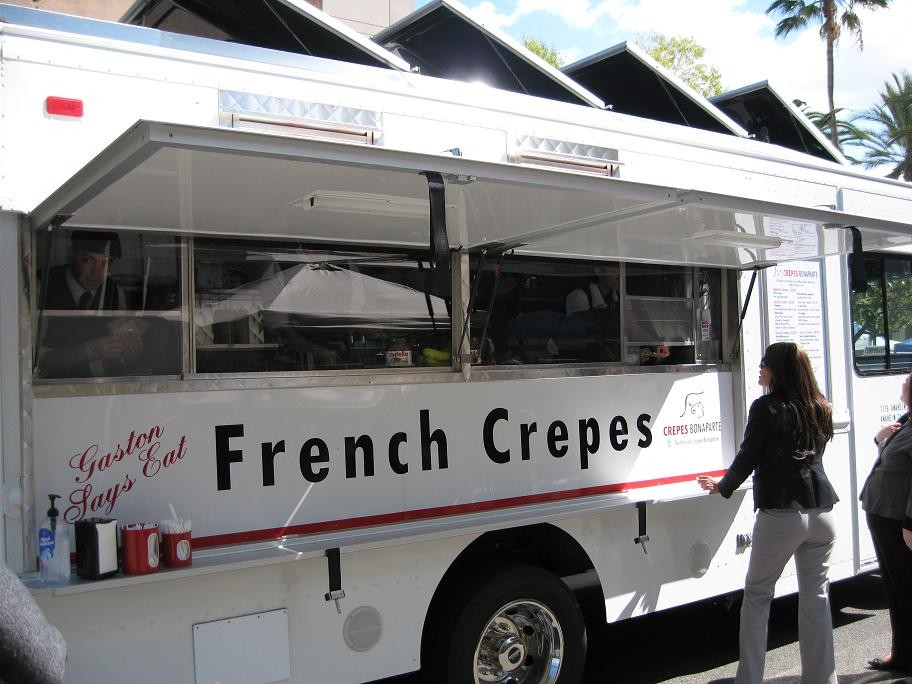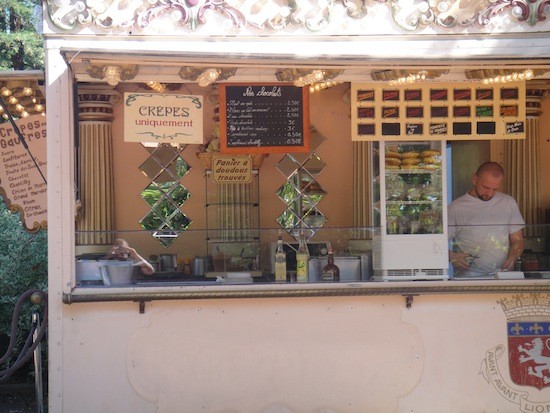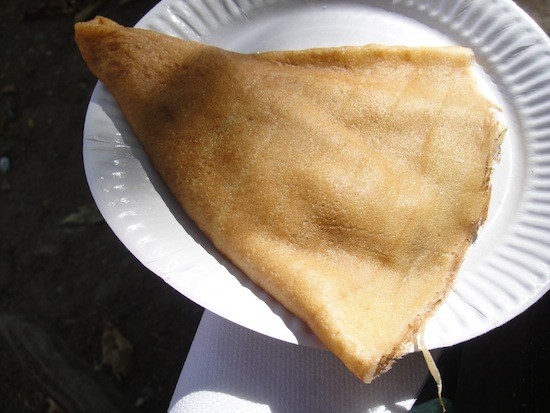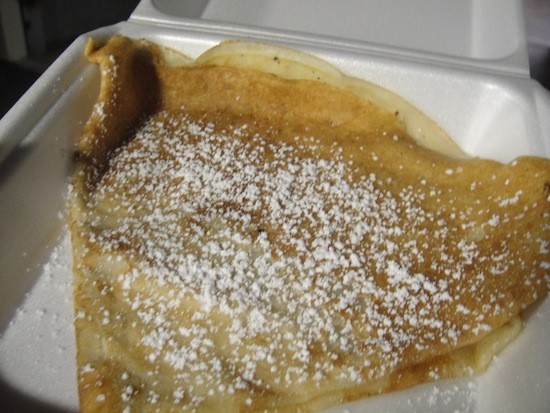
The entire country knows the Crêpes Bonaparte truck, thanks to the Food Network. Anyone who's been to the breweries' tasting rooms or the Anaheim farmers' market on Thursdays has seen them and discovered that they serve some good crêpes (at least, according to me and Gustavo).
But… are they French crêpes? Do they stack up against crêpes served in France, or have we been hoodwinked cruelly by mobile hipster con men in emasculating hats?
To find out, we spared no expense. The crack agents at OC Weekly's travel department soon had me winging my way eastward over the Atlantic, sipping on Cristal and snacking on tidbits in first class in order to lay this question to rest.
]

The test was simple: order a simple, very typically French crêpe at a mobile crêperie in France, and then order the same thing at Crêpes Bonaparte.
While my favorite crêperie in France, Aux Meilleures Crêpes de Paris, was my initial destination, it had a big defect: it stands permanently fixed at the corner of boulevard Poissonière and rue du Faubourg Montmartre in the 9th arrondissement of Paris. This problem plagued my second choice, Crêperie Chignon in Le Havre, a place where soft French crêpes compete on the menu board with crispy buckwheat crêpes from Brittany.
The mobile crêpe vendors along the Champs-Elysées and along the Quai Branly near the Eiffel Tower were rejected as well: too touristy, too unfrequented by French people, and home to the cardinal sin of crêperie: pre-made crêpes. It wouldn't be a fair fight; the cooks at Crêpes Bonaparte make their crêpes from scratch.

The chosen duelist, then, was a mobile crêpe vendor in the Parc de la Tête d'Or, a jewel of an urban park on the banks of the river Rhône in Lyon, the gastronomic capital of a country obsessed with gastronomy. Just past the unfenced deer enclosure, south of the lake and immediately adjacent to the carousel, I ordered a crêpe au citron et au sucre–lemon and sugar, the simplest crêpe–and sat in the blazing southern French sun to eat it.

2€ ($2.80) and a few minutes later, I had my crêpe. It was so soft it was floppy; the lemon juice and heavy sprinkling of granulated sugar made it heavy, so I had to support it with both hands while eating it. The flavor was, of course, wonderful; fresh lemon juice turned just slightly sweet by the sugar, which gave some textural contrast before it melted into the hot pancake.
Upon my return to the U.S., I adjourned to the Bruery for a crêpe from our local television stars. $3.25 for a lemon and sugar crêpe, which was hidden far, far down on the menu. My order inspired others; at least two more orders for lemon-and-sugar crêpes went in after mine.

The result? Nearly indistinguishable from a French crêpe. The same floppy texture, slightly caramelized taste that makes people love pancakes and crêpes, and a slightly crispier edge where the batter was thinner on the grill. The only real difference was that the lemon was slightly sweeter. I'm not sure if it's because they used more sugar, if they used finer sugar (which would taste sweeter) or if they sweetened the lemon juice before using it.
So, then, the answer to this week's question is yes. Yes, Crêpes Bonaparte's crêpes are sufficiently French. If they turned up in France, speaking French, and got rid of those ridiculous Marcel Marceau costumes they wear, they'd do good business. The beer adjacent to Gaston le Truck was also far, far better than the swill served at the café a few steps away from the crêperie in the Tête d'Or.
Congratulations, messieurs.
Crêperie du Manège, Parc de la Tête d'Or, 69006 Lyon, France. No telephone; no website.
Crêpes Bonaparte, Los Angeles and Orange County, CA. (714) 595-9995; crepesbonaparte.com.

